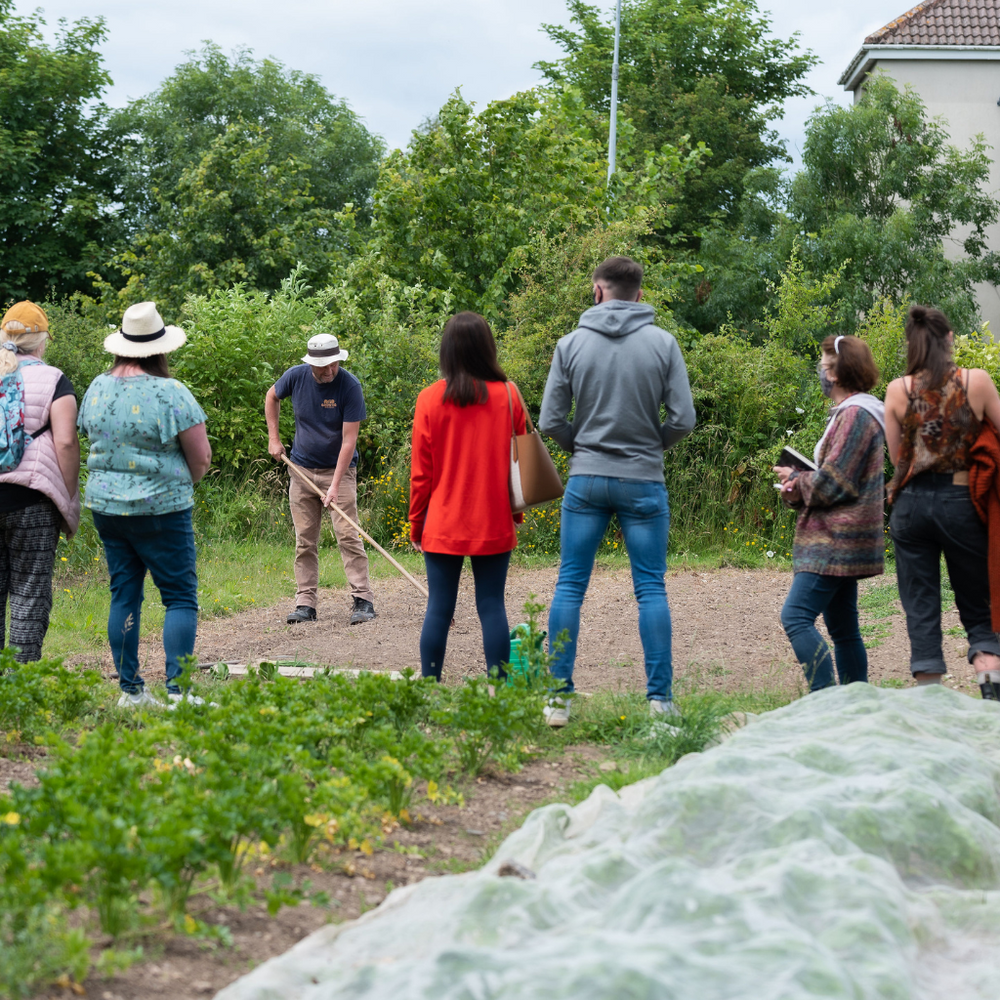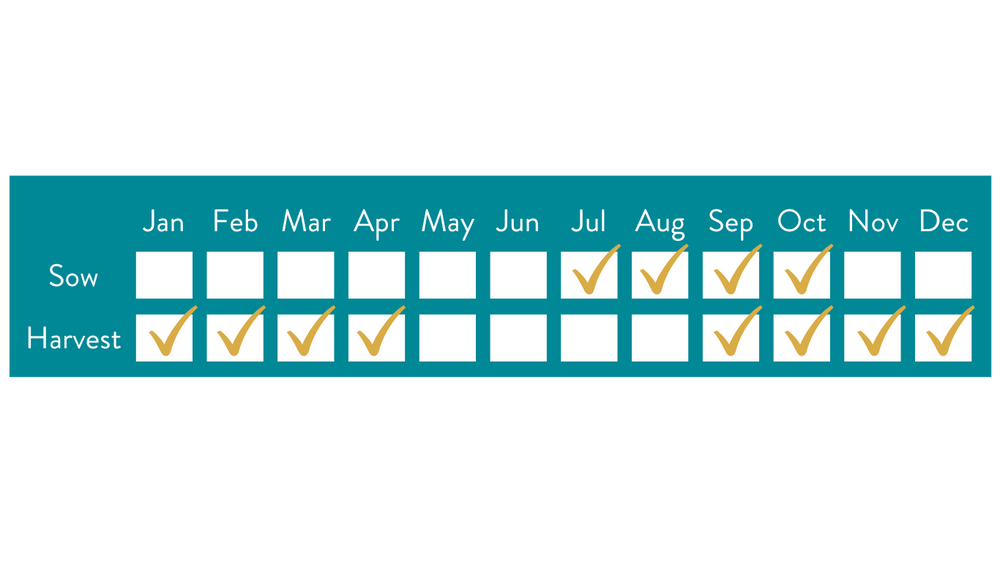
Video Guides
Need to build a raised bed? Or maybe you're battling those pesky slugs. We've got videos filled with easy and practical tips to help you in your veg patch.

Courses
Learn to grown, cook and eat some of your own food with our courses held at GROW HQ.

Claytonia
Veg Type:
Leaves
Growing Location:
Outdoors

Why Grow It
It might sound like a thrash metal band, but claytonia (also called winter purslane or miner’s lettuce) is in fact a really useful, hardy, heart-shaped winter salad green that can be used to bulk up winter salads and stirfries. It was called miner’s lettuce after the Gold Rush miners who valued its high vitamin C content to ward off scurvy.
Claytonia is a succulent, almost-meaty salad green that will also withstand cooking (so is excellent as an alternative to spinach) and is very easy to grow. Though claytonia will grow in the spring/summer, its real value is as a winter-hardy green, providing us with winter greens from October or November right up until April of the following year.
Claytonia deteriorates quickly once picked, which means you can rarely purchase it commercially – all the more reason to grow it yourself.
Recommended Variety
Sowing
- Claytonia can be sown in modules and transplanted, but is easier sown direct.
- It can be sown throughout the year, but is usually grown as a hardy winter salad crop.
- Sow August to October outside or in tunnels for winter salads.
- If sowing in modules, sow one seed per module and transplant when plants begin to outgrow the tray.
- Transplant into soil allowing 10cm between plants in 15cm rows.
- If sowing direct, sow thinly at 1cm depth, in rows 15cm apart.
Growing
- Claytonia will grow in any reasonable soil.
- The growing crop can be thinned to 2-4cm between plants, which tends to give larger leaves, though it will grow quite happily unthinned.
- Weeding is important whilst plants are young, as weeds can be harder to remove in a mature crop.
Harvesting
- Cut using scissors at 2-3cm above soil level.
- Leaves are tastiest when they are young and tender, though there is no problem with the plants flowering as they are traditionally used in salads with a flower on the leaf.
- If the leaves become old and tough, with maturing flowers on them, then the plants can be cut to 2cm above soil level and the foliage discarded and a young tender crop should regrow. However, this rarely works more than once, with the plants then becoming old and tough.
- Be careful where you put the old discarded leaves, as they will probably set seed and give you a serious weed problem – make sure to keep them away from your compost heap, veg patch and flower garden.
TIPS
- Claytonia will self-seed easily, which you may or may not want. If you don’t want to see everywhere, pull up the plants before they go to seed.
- Claytonia is also one of those rare plants that will do well in partial shade, so it’s ideal for a shady part of your garden.
Problems
- Generally trouble free, although slugs can be a problem in wet conditions.
Our food system is broken and at GIY we believe that nurturing a real connection to where our food comes from is the key to fixing it.
We're on a mission to inspire a global movement of food growers, one GIYer at a time.
Sign up to be the first to hear about all things GIY.













